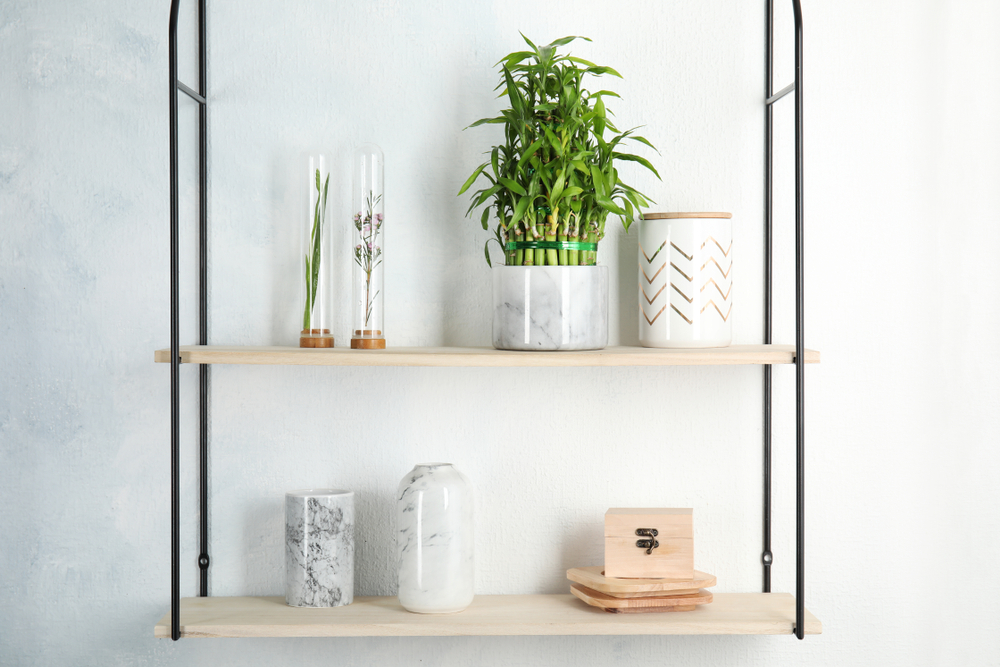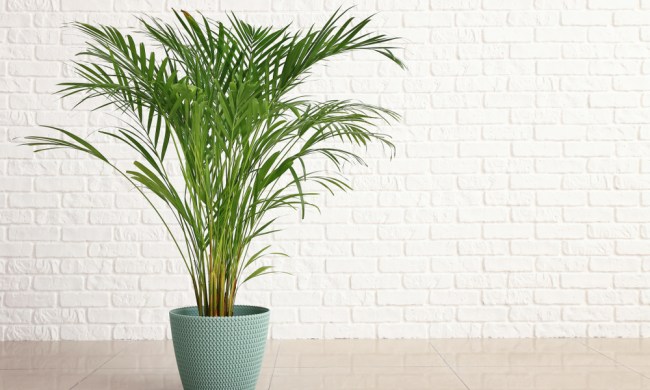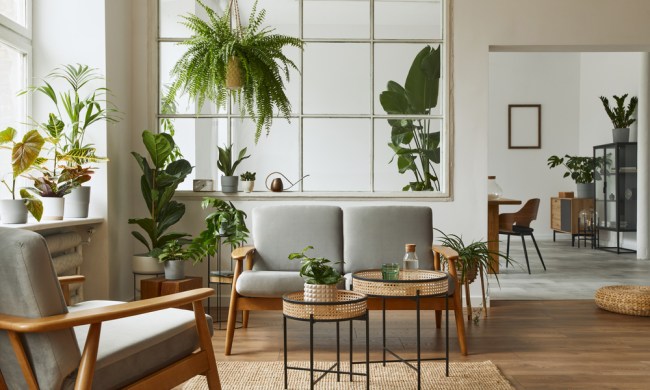If you’ve ever seen a simple and elegant bamboo design in offices or homes, you’ve likely spent some time appreciating the classic, chic setup. Like many other house plants, lucky bamboo is both decorative and beneficial to your health. There are even some popular beliefs that this feng shui plant brings positive energy and good fortune, which makes lucky bamboo a great gift for family, friends, and coworkers. Let’s talk about all the benefits of lucky bamboo and how to care for your plant properly.

What are the benefits of bamboo plants?
Aesthetic benefits
Lucky bamboo looks incredibly striking and it meshes wonderfully with clean, minimalist decor. This makes it a great option for offices or work-from-home spaces. One great thing about lucky bamboo is that it can be trained to curve into shapes with the use of a strategically placed light source. The stalks slowly bend toward the light, so you can twist and turn your plant to create spirals or other shapes.
Health benefits
Like many house plants, lucky bamboo has mood-lifting qualities, humidifying capabilities, and even some air-purifying benefits.
Easy to grow and care for
Lucky bamboo is super easy to care for, so it’s a great option for new plant parents or those inexperienced at caring for indoor plants. This makes lucky bamboo a great gift since you aren’t saddling the recipient with a high-maintenance plant.
Feng Shui benefits
Many believe that lucky bamboo brings good luck, fortune, and even love. Traditionally, the number of stalks in the plant signifies what type of luck will come the owner’s way. For example, one stalk indicates unity, two stalks represent love and romance, and some of the higher numbers of stalks represent wealth and prosperity.
What is the lifespan of a lucky bamboo?
While it’s easy to care for and extraordinarily resilient, lucky bamboo only lives for one to two years, particularly if it’s planted in water. You can prolong the life of your lucky bamboo for a few more years by transferring it to soil toward the end of its water-planted life. When it’s in soil, the plant continues to grow and produce more leaves, indicating that it’s surviving the transfer.

Lucky bamboo care and maintenance
While this unique and striking indoor plant is easy to care for, problems may still arise. Common issues include yellowing or browning leaves, algae growth, black roots, or decaying stalks. Most of these issues are due to unclean water, over-fertilizing, or improper light. Follow the below care and maintenance tips for the healthiest lucky bamboo.
Should you plant your lucky bamboo in soil or water?
Lucky bamboo will thrive in both environments. When planted in soil, lucky bamboo will live much longer and it’s much easier to maintain. Just ensure the soil is rich in nutrients and drains well.
In water, your bamboo looks more aesthetically pleasing — nothing beats the clean, simple appearance of pebbles, water, and bamboo stalks. To keep it healthy, cover the roots with pebbles and fill the basin with water until it reaches just above the roots. Avoid bacteria growth by changing the water often and cleaning the pebbles frequently.
How much light does lucky bamboo need?
Since it’s originally from rainforests in Asia and Africa, lucky bamboo likes light conditions that mimic being under the thick rainforest canopy. It likes bright light, but not direct sunlight. If you notice stretching stalks and fading green colors, the plant needs more light. Alternatively, if there are any scorched leaves, pull back on the light a little bit.
Watering lucky bamboo
If you’re growing this plant in water, change the water every week or so. If you’re growing in soil, water it frequently so the soil remains moist but not soaking wet. For both methods, use distilled or filtered water since lucky bamboo is sensitive to chemicals like fluoride and chlorine.
Fertilizing your lucky bamboo properly
Since filtered water tends to have fewer nutrients, you may want to fertilize your plant to encourage growth and help it fight off any diseases. Use a fertilizer that is intended for bamboo plants, or you can use a diluted house plant fertilizer. Add fertilizer to the soil-growing bamboo every six weeks or so and to water-growing bamboo every few months. Yellowing bamboo is an indication that you’re likely fertilizing too often.
Lucky bamboo is stylish, clean, and easy to care for. It may even bring you some good luck! While this plant can be finicky when it comes to its care routine, following these simple care instructions should give you a healthy, thriving plant for years to come.



